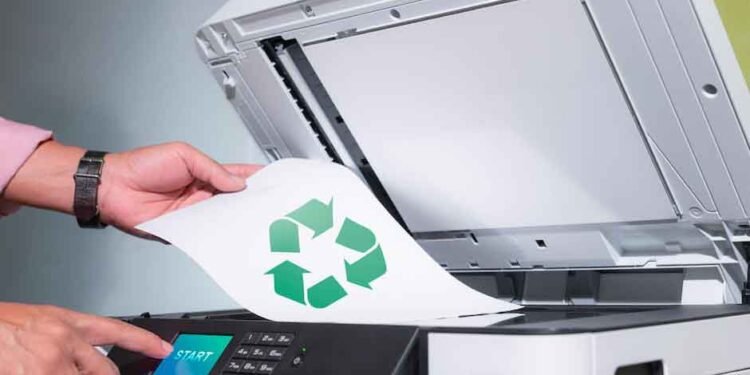When people talk about technological revolutions, they often point to AI, cloud computing, or smart home devices. But one of the most underappreciated shifts is happening in the realm of printing and document management. Modern printers do more than churn pages; they’ve become smarter, quieter, more connected, and far more efficient. This quiet evolution deserves recognition because it underpins how we handle information in daily life.
This transformation matters because printing remains a bridge between the digital and physical world. It’s where ideas, contracts, images, and data collide with paper. As such, improvements in this space ripple through offices, homes, and learning environments.
Sharper Thinking Through Cleaner Output
One way printing tech sharpens thinking is by producing cleaner, more consistent output. Gone are the days of smudged pages, streaks, or faint lines across text. Newer devices maintain high fidelity through better toner chemistry, refined drum mechanisms, and smarter calibration routines.
When your printed documents are legible, professional, and reliable, it becomes easier to focus on the content rather than wrestle with formatting or clarity issues. A crisp contract, a clearly printed chart, or a sharp handout helps reduce cognitive friction; you don’t waste time deciphering blurred text or checking for misalignments.
Smarter Print = Less Waste, More Efficiency
Printing smarter means using fewer resources while getting better results. Many modern printers include features like automatic blank-page skipping, duplex (double-sided) printing, or n-up layouts (printing multiple pages on one sheet). These features reduce paper and toner use without compromising readability.
In addition, smart device firmware and driver software can detect when toner is low or when pages don’t need full colour. They optimise usage so you don’t replace cartridges prematurely, and you avoid excessive colour printing when black-and-white suffices.
By being frugal in their print decisions, modern printers encourage us to print only what’s necessary and help protect budgets and the environment in the process.
Quiet That Works in the Background
A big part of the “quiet revolution” is literally noise reduction. Older printers, especially in high-volume settings, could sound like machinery in motion. The hum, clicks, and whirs of moving parts were part of the background soundtrack in many offices.
Today’s models are built with better dampening, more precise motors, and well-sealed housings. Many devices whisper rather than roar. That quietness allows them to sit closer to workspaces, home offices, or libraries without being disruptive. You’re less likely to hesitate before printing in the middle of a meeting.
Seamless Connectivity Clears Mental Clutter
Another pillar of smarter printing is connectivity. Modern printers talk to your devices via Wi-Fi, Bluetooth, USB, or network protocols. They integrate with cloud storage, mobile apps, and software suites, allowing you to print directly from your phone or tablet.
This seamless connection reduces friction. You no longer have to email files to a computer just to print them, or struggle with driver compatibility. The technology supports you, rather than demanding you adapt to it. As a result, printing becomes a tool rather than a chore.
Compact Yet Capable Fitting into Modern Spaces
Devices like the HP Color Laser 150nw are engineered with small-footprint, high-impact design. Despite their compact size, they deliver respectable print quality, flexible connectivity, and reliable performance. You can check out HP 150nw toner to ensure your device continues running smoothly.
By making powerful printing accessible even in small spaces, modern printers help bring professional capabilities into places where bulkier machines once wouldn’t fit.
Adapting to Change, Evolving Over Time
One of the hallmarks of modern tech is modularity and upgradeability. Printers today often support firmware updates, optional add-ons (like paper trays or memory), and better compatibility as protocols evolve.
This adaptability means a printer you buy today can stay relevant rather than becoming obsolete in a few years. That longevity is part of how the quiet revolution delivers value beyond just the immediate function.
Bringing It All Together
“Thinking sharper, printing smarter” captures something deeper than just technical prowess. It’s about how well our tools support the flow of ideas, rather than replacing or interrupting them. The quiet revolution in printing doesn’t demand attention; it gracefully fades into the background, letting you focus on purpose, not process.












